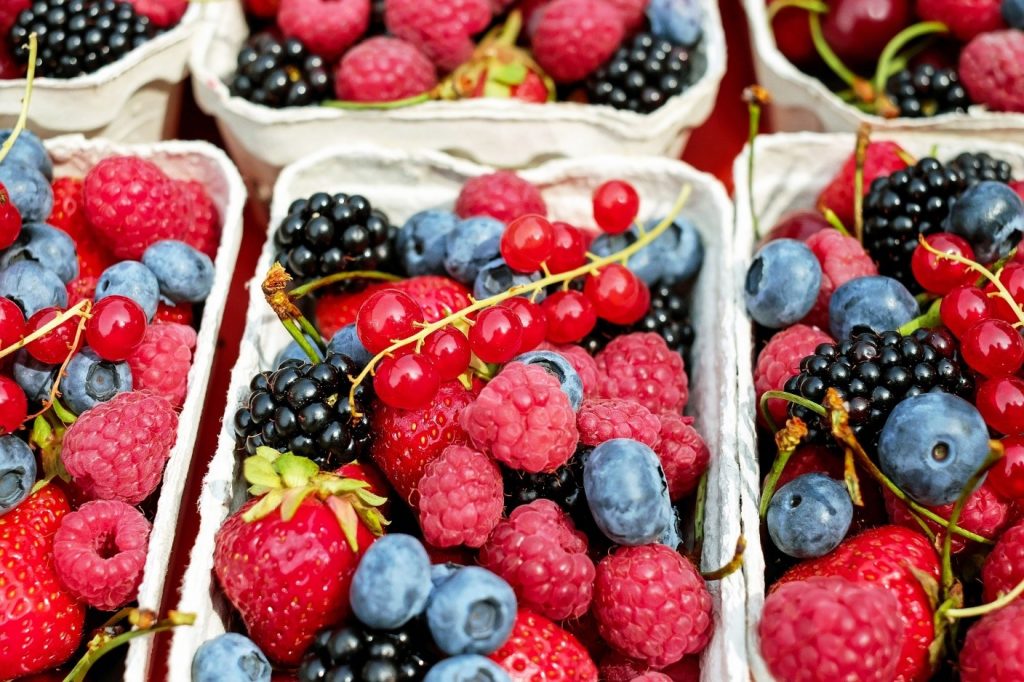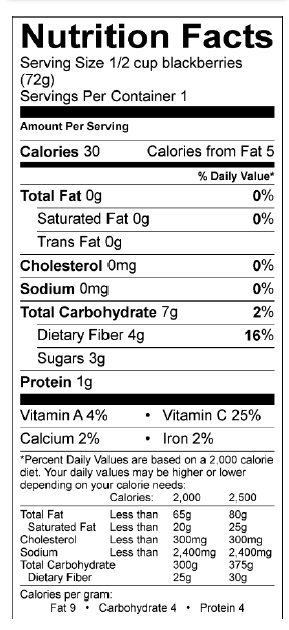Did you know?
Commercial strawberries are picked, sorted, and packed in the field. They are cooled to 34°F and loaded onto refrigerated trucks. The average strawberry reaches the consumer within 24-36 hours of harvest! That’s berry fast!

Considering their small size, raspberries, blackberries, blueberries, and strawberries pack an astonishing amount of vitamins, minerals, and flavor into their flesh. With a long list of health benefits and sweet taste, berries top the list of ‘superfoods.’ Traditionally utilized by Native Americans, berries have been used as medicinal supplements and dyes for centuries. Berries contain powerful antioxidants, lowering the risk of developing certain types of cancers. In addition, berries have a wide range of applications in the diet from smoothies to jams. To extend the season, berries can be frozen, dried, or canned to enjoy throughout the winter months.
Seasonality
In Colorado, the peak season for raspberries and blackberries runs from August 1 to October 15. Strawberries are available a bit earlier in the season from June 1 to October 1. Berries can be purchased in season from local markets, roadside stands, and pick-your-own operations.
Growing Your Own

Strawberries, blackberries and raspberries grow well in backyard gardens throughout Colorado; however blueberries are a bit more challenging. Colorado’s high pH soils prevent most blueberries from growing in the ground. Blueberries require acidic soils between 4.8 and 5.2 pH. However, research is being conducted at Colorado State University to determine whether blueberries can successfully be produced in pots containing lower pH soils. Raspberries are the hardiest of the bush fruits and can withstand temperatures of minus 35 degrees and still produce fruit the next year. Red raspberries grow well along the Front Range, while black and purple varieties grow better in the milder climates of the Western Slope. If you are interested in planting your own berry patch this year, contact your local Extension agent for more information on soils, varieties, and planting times.
Harvesting
Pick strawberries at least every other day during the peak of the season. It is poor practice to let fruit rot on the vine, so pick even the rotted fruit. If berries are to be eaten or preserved immediately, harvest only red-ripe fruit and leave the caps on the plant. If the fruit will not be used for a few days, harvest the berries, caps and all, while still pink.
Selection, Handling, and Storage
Choose berries that are free from visible mold, not bruised or smashed, and relatively dry. Excess moisture on the berry will accelerate the deterioration of the fruit by allowing for the growth of bacteria and molds. Keep berries refrigerated until ready to consume. Wash berries thoroughly with cold water right before eating, adding to salads, or cooking.
Preserving Berries
Freezing: Arrange in a single layer on a cookie sheet and place in the freezer. Once frozen, pack berries into freezer bags or containers for use in baking, as toppings on cereal, or for making smoothies.
Drying: Select clean, mold free fruit. Arrange in a single layer on the drying rack. Small berries can be dried whole. Larger berries like strawberries can be sliced to create thin ‘chips’ that are a healthy snack and great addition to trail mixes and morning cereal.
Berry Trio Parfait

- 2 cups plain yogurt
- 2 cups of your favorite granola
- 2 cups fresh berries (raspberry, blackberry, blueberry, strawberry- washed, hulled and sliced)
- 4 tablespoons honey (optional)
Line up four parfait cups and spoon 2-3 tablespoons of yogurt into each. Smooth yogurt and spoon 2-3 tablespoons of granola over top. Add a layer of berries and continue layering until cup is full. Drizzle honey throughout layers, if desired.

Nutrition
Tests of almost 40 different fruits and vegetables found that berries pack a lot of antioxidant power for very few calories – just 30 calories in one-half cup of blackberries and raspberries! Not only have berries been shown to lower the risk of cardiovascular disease and cancer, but they may also protect the brain from the effects of age-related conditions such as Alzheimer’s disease and dementia. Berries are high in Vitamin A and C, as well as fiber. Eat a handful on top your cereal, yogurt, or ice cream or toss them into salads as a delicious surprise.
Food Safety
Wash berries prior to eating by rinsing with cold water. Washing berries removes dirt, insects, and potential parasites such as Cyclospora that can cause foodborne illness. Do not eat berries which have extensive mold growth within the pack. Keep berries dry until consumption to extend their shelf life and quality.
Uses
- Pies
- Jams and jellies
- Smoothies
- Baking
- Garnishes
- Salads


